Citizens United Constitutional Amendment – Open Letter
 Memorandum
Memorandum
To:
Speaker of the United States House of Representatives John Boehner
Minority Leader of the United States House of Representative Nancy Pelosi
United States Senate Majority Leader Harry Reid (Current)
United States Senate Minority Leader Mitch McConnell (Current)
Subject:
Legislation to Create a Constitutional Amendment to Address the Supreme Court Ruling in Citizens United vs. Federal Elections Committee (FEC)
Introduction
The purpose of this open memorandum is to give the addressed audience the background behind one of the Supreme Court’s most critical rulings in determining how political speech can and will be voiced in the United States, as well who will be afforded this microphone for such speech. It is important to know background behind the legislation that was created that led to this decision, the fallout in terms of the tremendous influx and rise of corporate and individual contributions to super PACs and the infinite rise of dark contributions that are without disclosure, identity, or known motive to become prevalent in today’s political marketplace.
The Supreme Court has afforded individual rights to corporations throughout its existence but it, nor the legislative branch of the Unites States government have taken steps to clearly outline and define legal rights that should be afforded to corporations and which rights are exclusively endowed to actual human citizens. A constitutional amendment is the most clear path to defining and finally making a clear distinction and protect the liberties of citizens by provide corporations with adequate legal recognition and protection. A constitutional amendment is not an act of small proportions and will take both sides of the isle to find common ground in order to find a solution to the removes the court’s interpretation of whom and what are covered under specific amendments. Though it will be tough, it is vital to the preservation of the individual citizen to make such distinctions and definitions clear and a permanent within the United States Constitution.
Background in Citizens United vs. Federal Elections Committee
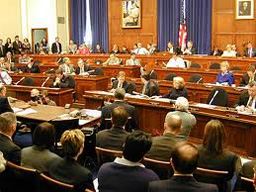 In 2002 the Bipartisan Campaign Reform Act (BCRA) also known as the McCain Feingold Campaign Reform Act was signed into law by then President George W. Bush (BCRA, n.d.). The purpose of the bipartisan legislation was to address campaign financing in five main areas: soft money contributions and regulations, reform of electioneering communication from non-candidate organizations and individuals, the prohibiting of corporations and labor unions from using funds from their general treasuries to fund electioneering communications, the placement of an exemption for nonprofit organizations was implemented to allow these groups to use general treasuries to fund electioneering communications, and the final major subject addressed in the legislation is the placement of coordination restrictions and disclosure policies for advertising (BCRA, n.d.). The law almost immediately saw legal challenges spear headed by Senator Mitch McConnell and the National Rifle Association (NRA) whom both challenged the constitutionality of the legislation and ultimately the Supreme Court heard several challenges directed at specific sections of the act shortly after the bill became law and in all instances affirmed the legislation or pushed the argument back to be argued once the law is applied (BCRA, n.d).
In 2002 the Bipartisan Campaign Reform Act (BCRA) also known as the McCain Feingold Campaign Reform Act was signed into law by then President George W. Bush (BCRA, n.d.). The purpose of the bipartisan legislation was to address campaign financing in five main areas: soft money contributions and regulations, reform of electioneering communication from non-candidate organizations and individuals, the prohibiting of corporations and labor unions from using funds from their general treasuries to fund electioneering communications, the placement of an exemption for nonprofit organizations was implemented to allow these groups to use general treasuries to fund electioneering communications, and the final major subject addressed in the legislation is the placement of coordination restrictions and disclosure policies for advertising (BCRA, n.d.). The law almost immediately saw legal challenges spear headed by Senator Mitch McConnell and the National Rifle Association (NRA) whom both challenged the constitutionality of the legislation and ultimately the Supreme Court heard several challenges directed at specific sections of the act shortly after the bill became law and in all instances affirmed the legislation or pushed the argument back to be argued once the law is applied (BCRA, n.d).
Citizens United is nonprofit corporation that states is “dedicated to educating the American public about their rights and the government” and in the 2008 presidential election cycle produced a expressively conservative political ninety minute movie that attacked then Senator Hillary Clinton whom was running for the Democratic presidential nomination (Citizens United v. Federal Election Commission (Docket No. 08-205), 2009). As noted in the BCRA a ban on direct financing of electioneering communications and also required that such advertising have disclaimer and disclosure information provided to identify where the money for the advertising came from (Citizens United v. Federal Election Commission (Docket No. 08-205), 2009). Citizens United sought to have these provisions of the BCRA challenge and on March 24, 2009 the Supreme Court heard oral arguments challenging the BCRA and the court was faced then with four overarching questions in their decision: should electioneering communication as defined and restrictions imposed in the BCRA be upheld, are the disclosure requirements within the BCRA “overly burdensome and fail a strict scrutiny test as-applied to The Movie”, determination if The Movie fell into the category of a “clear plea for action to vote”, and whether or not The Movie was considered an advertisement which then would make it subject to regulations within the BCRA(Citizens United v. Federal Election Commission (Docket No. 08-205), 2009).
In January 2010, the Supreme Court ruled that “the government may not ban political spending by corporations in candidate elections” (Liptak, 2010). The court was split five to four in their ruling with the majority stating that the government cannot and should not be permitted to limit political speech while the decent stated that this ruling will lead to the money pouring into political advertising and will ultimately undermine democracy in the United States (Liptak, 2010). This ruling not only struck down the key provisions within the BCRA (that had already been ruled and upheld by the court in 2003) it was constitutional to place restrictions on corporate and union spending for political advertising and also overruled a 1990 Supreme Court decisions that had found it constitutional to implementation restrictions on corporate spending in political campaigns (Liptak, 2010). Writing for the majority Justice Kennedy “When government seeks to use its full power, including the criminal law, to command where a person may get his or her information or what distrusted source he or she may not hear, it uses censorship to control thought […] This is unlawful. The First Amendment confirms the freedom to think for ourselves” (Liptak, 2010). The court in the majority decision also gave a more subtle indication within their ruling that “independent contributions could not corrupt (Hasen, 2012). In part of a twenty minute decent from the bench Justice John Paul Stevens stated “the majority had committed a grave error in treating corporate speech the same as that of human beings” (Liptak, 2010). The ruling fell across political lines with the five conservative justices backing Citizens United and the liberal justices descending leaving a huge loophole for political spending poured into the political spectrum and having a congress as divided as the courts resolution progress on creating a resolution to the action taken by the court seems unlikely.
Citizens United Ruling and the Rise of the Super PAC
Though in the 1976 Supreme Court ruling, the justices ruled that an individual could spend unlimited amounts of money to advertise for or against candidates, this money had to be used by the individual and could not be given to a political action committee or PAC (Hasen, 2012). Since the individuals would have to declare in the advertising that they had paid for it, few individuals chose to make individually funded advertising even though it was ruled to be legal (Hasen, 2012). Prior to the Citizens United ruling PACs had been limited to five thousand dollars in individual contributions and corporations and unions were forbidden from making any contributions to these groups (Hasen, 2012). Following the Citizens United ruling the 527 groups (named for the section of nonprofit tax standing under the U.S. Internal Revenue Code they fall under) claimed they could take unlimited funds from not only individuals but also corporations and unions as they were not considered PACs under the FEC’s definition of PACs and led to the rise of the super PAC that can raise and spend unlimited amounts of money (Hasen, 2012).
Looking only at presidential elections since BCRA was enacted, so called super PACs had the following spending activities : 2004 – $14,193,530 / 2008: $37,509,249 / and following the Citizens United decision in 2010 the 2012 spending jumped to over a billion dollars with $308.7 million having no disclosure at all (Hasen, 2012) (Outside Spending, n.d.). In looking at this current year’s midterm election super PAC, 527 and 501C spending based on FEC daily updates through November 16, 2014 nearly five-hundred and sixty million dollars with only three-hundred and forty million having full disclosure, it should also be noted that the super PAC is by far and away the largest receiver of dollars and spending on electioneering communications (Outside Spending, n.d.). This kind of expansion of corporate personhood affording free speech to such entities only act to mute the individual voice that the First Amendment was designed to protect, not to mention the corruption that can only follow such unbridled spending.
Corporate Citizenship in the United States Supreme Court
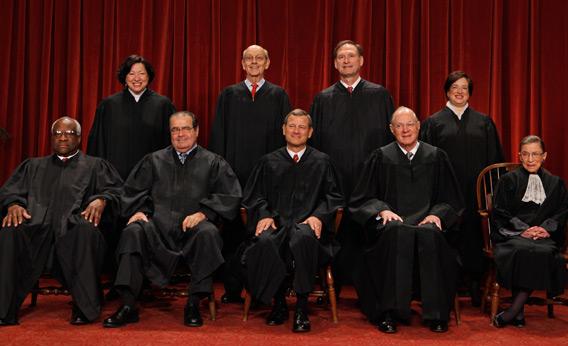 Since the inception of the United States there have been at least nine Supreme Court decisions beyond the Citizens United case that have weighed in to classify companies and corporations individuals in the eyes of the law. The first rights to be decided by the court revolved around the citizen classification and jurisdictional questions. In 1809 in the Bank of the United States vs. Deveaux as federal and state jurisdictions were still being established, the defendant argued that since corporations are not people, they could not bring a case to federal court and the court agreed meaning that corporations could only have legal standing in federal courts if all shareholders or at least one of the opposing party lived in the same state (Park, 2014). In 1844, it had become apparent that the 1809 ruling had put corporations primarily out of reach of the federal court system and ruled in Louisville, Cincinnati, and Charleston Railroad vs. Letson that “corporations were “citizens” of the states where they incorporated” (Park, 2014). Marshall vs. Baltimore and Ohio Railroad in the Supreme Court’s 1853 ruling further defined the corporations as citizens as applied to jurisdiction of the courts and outlined that corporations did not enjoy the same constitutional rights as real people thus making shareholders to be considered citizens of the companies home state making it easier for federal court proceedings to be brought by and against corporations (Park, 2014).
Since the inception of the United States there have been at least nine Supreme Court decisions beyond the Citizens United case that have weighed in to classify companies and corporations individuals in the eyes of the law. The first rights to be decided by the court revolved around the citizen classification and jurisdictional questions. In 1809 in the Bank of the United States vs. Deveaux as federal and state jurisdictions were still being established, the defendant argued that since corporations are not people, they could not bring a case to federal court and the court agreed meaning that corporations could only have legal standing in federal courts if all shareholders or at least one of the opposing party lived in the same state (Park, 2014). In 1844, it had become apparent that the 1809 ruling had put corporations primarily out of reach of the federal court system and ruled in Louisville, Cincinnati, and Charleston Railroad vs. Letson that “corporations were “citizens” of the states where they incorporated” (Park, 2014). Marshall vs. Baltimore and Ohio Railroad in the Supreme Court’s 1853 ruling further defined the corporations as citizens as applied to jurisdiction of the courts and outlined that corporations did not enjoy the same constitutional rights as real people thus making shareholders to be considered citizens of the companies home state making it easier for federal court proceedings to be brought by and against corporations (Park, 2014).
Following the United States Civil War and the enactment of the Fourteenth Amendment the Southern Pacific Railroad in County of Santa Clara vs. Southern Pacific Railroad stated that as corporations are citizens it was illegal for the county to enact a tax specific to the railroad (Park, 2014). Though the court never eluded to the railroad being protected by the Fourteenth Amendment, the court reporter did include in the published notes of the ruling that the rights afforded under the Fourteenth Amendment and this adage would be used later citing this case as grounds to uphold corporate protection under the Fourteenth Amendment in 1898’s Smyth vs. Ames decision which protected corporations from property seizure without due process (Park, 2014). Hale vs. Henkel in 1906 continued to uphold a corporation’s protection under the Fourteenth Amendment but drew a distinction that companies were not protected from self-incrimination afforded under the Fifth Amendment (Park, 2014).
The distinction in regards to the Fifth Amendment was then back tracked in the Russian Volunteer Fleet vs. United States stating that foreign corporations are also protected from illegal government seizure and had an equal right fair treatment in the legal system (Park, 2014). In 1977 the right to shield a corporations from double jeopardy was also upheld in United States vs. Martin Linen Supply Company (Park, 2014). Finally in 2012, the Supreme Court ruled in Burwell vs. Hobby Lobby that corporations are also legally protected by the First Amendment’s freedom of religion (Park, 2014). Reviewing the consistent rulings of the court it has been made clear that corporations have been afforded rights traditionally viewed as individual citizen rights under the constitutions the blurring of a reality what are actual individual rights for a physical individual to poses and which are the rights afforded to both individuals and corporations as a pseudo citizen.
Constitutional Amendment
It is clear that a corporation, though founded by individuals with shareholders whom are also people, in everyday life no one would mistake a corporation for an actual living breathing human being. It can be seen why the courts have been put into the position of needing to adapt certain provisions of the constitution to adequately protect and litigate corporations but the time has come to clearly define the limitations of the corporations protections afforded by the constitution and limit the influence and power that such organizations can wheeled within the United States political system, especially if the corporation is looking for anonymity from the scrutiny of disclosure. It is the responsibility of the legislative branch of the United States government to look at over two centuries of court rulings that have gradually created the corporate citizen and the ambiguity that that has fashioned to know that it is time for action that is much less open to interpretation.
Such a movement to create the Twenty-eighth Amendment due to the process of a constitutional amendment will require that it be designed to show the benefit for corporations, the individual citizen, as well move above political partisanship that has created gridlock and division not only in Washington D.C. but across towns, families, and states over the past several decades. Compromise and partnership were the cornerstones of what this democracy were built on and must be rekindled in order to save the union from its own apathy in the face of critical problems. A bipartisan recognition of the problem that exist needs to be made as a first step, though the reasons for such an identification do not need to be the same, the recognition of a problem must be a vital step in creating an understanding.
The writing of the legislation must also take bipartisan roots and impute should be actively solicited through congressional hearing from civil liberties organizations, as well, from corporate leadership and organization. By using congressional hearing as an avenue to create transparency around the process, any lobbyist for or against such an amendment should also be given the opportunity to present their case under oath in congressional hearings. Though there is no way legally to stop lobbyists from inserting pressure from their backers it would be admirable for all members of congress to take a pledge to only take official testimony from lobbyists if only on this one issue. By doing this the air of unofficial influence can be remediated in the process and deciding factors within the legislation can have known origins.
It would be best to use the tradition of starting a constitutional by providing a two thirds majority in both the United States House and Senate and then look to two thirds of the states for ratification. But if the gridlock that has prevented major legislation from moving through both chambers of congress cannot be overcome and in a time of instant information sharing and given the critical nature of this legislation, citizens should coordinate and call on their state legislatures to act in calling a constitutional convention which can be demanded with such passage by two thirds of the states in the union (Constitutional Amendment Process, n.d.). This subject has the potential to unify America in the address a problem that has been growing through the existence of the country and must be dealt with from the legislatures within this country instead of deferral to the courts whom are not elected or accountable to a constituency.
References
- BCRA. (n.d.). Cornell University Law School. Retrieved November 20, 2014, from http://www.law.cornell.edu/wex/bcra
- Citizens United v. Federal Election Commission (Docket No. 08-205). (2009, March 9). Cornell University Law School. Retrieved November 2, 2014, from http://www.law.cornell.edu/supct/cert/08-205
- Constitutional Amendment Process. (n.d.). National Archives and Records Administration. Retrieved November 20, 2014, from http://www.archives.gov/federal-register/constitution/
- Liptak, A. (2010, January 21). Justices, 5-4, Reject Corporate Spending Limit. The New York Times. Retrieved November 2, 2014, from http://www.nytimes.com/2010/01/22/us/politics/22scotus.html?pagewanted=all&_r=1
- Hasen, R. (2012, March 9). How the Supreme Court Flooded the 2012 Campaign Season With Cold, Hard Cash. Slate Magazine. Retrieved November 20, 2014, from http://www.slate.com/articles/news_and_politics/politics/2012/03/the_supreme_court_s_citizens_united_decision_has_led_to_an_explosion_of_campaign_spending_.html
- Outside Spending. (n.d.). Opensecrets.org. Retrieved November 20, 2014, from https://www.opensecrets.org/outsidespending/summ.php?cycle=2014&chrt=V&disp=O&type=P
- Park, A. (2014, July 10). 10 Supreme Court rulings–before Hobby Lobby–that turned corporations into people. Mother Jones. Retrieved November 20, 2014, from http://www.motherjones.com/politics/2014/07/how-supreme-court-turned-corporations-people-200-year-saga
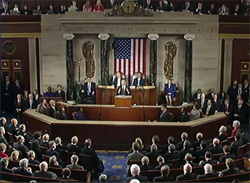 This is the ninth part of a multiple part series taking a deep dive into our current political and economic crisis in America. Partisan politics, unfettered corporate spending and recklessness along with a shift in our social acceptance of debt, is having far reaching and potentially devastating affects on our way of life, on the American Dream. With each installment we will take a closer look at some of the major pieces of this very complex puzzle and try to understand them and bring them into perspective. Use this opportunity to take a broader look on the political and social economic state of America and how each of us, as a small pieces of the puzzle, can make a difference.
This is the ninth part of a multiple part series taking a deep dive into our current political and economic crisis in America. Partisan politics, unfettered corporate spending and recklessness along with a shift in our social acceptance of debt, is having far reaching and potentially devastating affects on our way of life, on the American Dream. With each installment we will take a closer look at some of the major pieces of this very complex puzzle and try to understand them and bring them into perspective. Use this opportunity to take a broader look on the political and social economic state of America and how each of us, as a small pieces of the puzzle, can make a difference.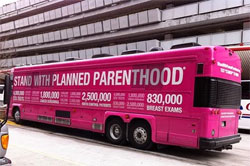 This is the eighth part of a multiple part series taking a deep dive into our current political and economic crisis in America. Partisan politics, unfettered corporate spending and recklessness along with a shift in our social acceptance of debt, is having far reaching and potentially devastating affects on our way of life, on the American Dream. With each installment we will take a closer look at some of the major pieces of this very complex puzzle and try to understand them and bring them into perspective. Use this opportunity to take a broader look on the political and social economic state of America and how each of us, as a small pieces of the puzzle, can make a difference.
This is the eighth part of a multiple part series taking a deep dive into our current political and economic crisis in America. Partisan politics, unfettered corporate spending and recklessness along with a shift in our social acceptance of debt, is having far reaching and potentially devastating affects on our way of life, on the American Dream. With each installment we will take a closer look at some of the major pieces of this very complex puzzle and try to understand them and bring them into perspective. Use this opportunity to take a broader look on the political and social economic state of America and how each of us, as a small pieces of the puzzle, can make a difference.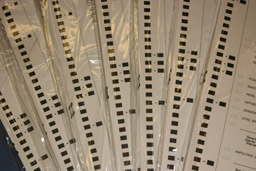 This is the seventh part of a multiple part series taking a deep dive into our current political and economic crisis in America. Partisan politics, unfettered corporate spending and recklessness along with a shift in our social acceptance of debt, is having far reaching and potentially devastating affects on our way of life, on the American Dream. With each installment we will take a closer look at some of the major pieces of this very complex puzzle and try to understand them and bring them into perspective. Use this opportunity to take a broader look on the political and social economic state of America and how each of us, as a small pieces of the puzzle, can make a difference.
This is the seventh part of a multiple part series taking a deep dive into our current political and economic crisis in America. Partisan politics, unfettered corporate spending and recklessness along with a shift in our social acceptance of debt, is having far reaching and potentially devastating affects on our way of life, on the American Dream. With each installment we will take a closer look at some of the major pieces of this very complex puzzle and try to understand them and bring them into perspective. Use this opportunity to take a broader look on the political and social economic state of America and how each of us, as a small pieces of the puzzle, can make a difference. This is the forth part of a multiple part series taking a deep dive into our current political and economic crisis in America. Partisan politics, unfettered corporate spending and recklessness along with a shift in our social acceptance of debt, is having far reaching and potentially devastating affects on our way of life, on the American Dream. With each installment we will take a closer look at some of the major pieces of this very complex puzzle and try to understand them and bring them into perspective. Use this opportunity to take a broader look on the political and social economic state of America and how each of us, as a small pieces of the puzzle, can make a difference.
This is the forth part of a multiple part series taking a deep dive into our current political and economic crisis in America. Partisan politics, unfettered corporate spending and recklessness along with a shift in our social acceptance of debt, is having far reaching and potentially devastating affects on our way of life, on the American Dream. With each installment we will take a closer look at some of the major pieces of this very complex puzzle and try to understand them and bring them into perspective. Use this opportunity to take a broader look on the political and social economic state of America and how each of us, as a small pieces of the puzzle, can make a difference. This is the third part of a multiple part series taking a deep dive into our current political and economic crisis in America. Partisan politics, unfettered corporate spending and recklessness along with a shift in our social acceptance of debt, is having far reaching and potentially devastating affects on our way of life, on the American Dream. With each installment we will take a closer look at some of the major pieces of this very complex puzzle and try to understand them and bring them into perspective. Use this opportunity to take a broader look on the political and social economic state of America and how each of us, as a small pieces of the puzzle, can make a difference.
This is the third part of a multiple part series taking a deep dive into our current political and economic crisis in America. Partisan politics, unfettered corporate spending and recklessness along with a shift in our social acceptance of debt, is having far reaching and potentially devastating affects on our way of life, on the American Dream. With each installment we will take a closer look at some of the major pieces of this very complex puzzle and try to understand them and bring them into perspective. Use this opportunity to take a broader look on the political and social economic state of America and how each of us, as a small pieces of the puzzle, can make a difference. This is the second part of a multiple part series taking a deep dive into our current political and economic crisis in America. Partisan politics, unfettered corporate spending and recklessness along with a shift in our social acceptance of debt, is having far reaching and potentially devastating affects on our way of life, on the American Dream. With each installment we will take a closer look at some of the major pieces of this very complex puzzle and try to understand them and bring them into perspective. Use this opportunity to take a broader look on the political and social economic state of America and how each of us, as a small pieces of the puzzle, can make a difference.
This is the second part of a multiple part series taking a deep dive into our current political and economic crisis in America. Partisan politics, unfettered corporate spending and recklessness along with a shift in our social acceptance of debt, is having far reaching and potentially devastating affects on our way of life, on the American Dream. With each installment we will take a closer look at some of the major pieces of this very complex puzzle and try to understand them and bring them into perspective. Use this opportunity to take a broader look on the political and social economic state of America and how each of us, as a small pieces of the puzzle, can make a difference.